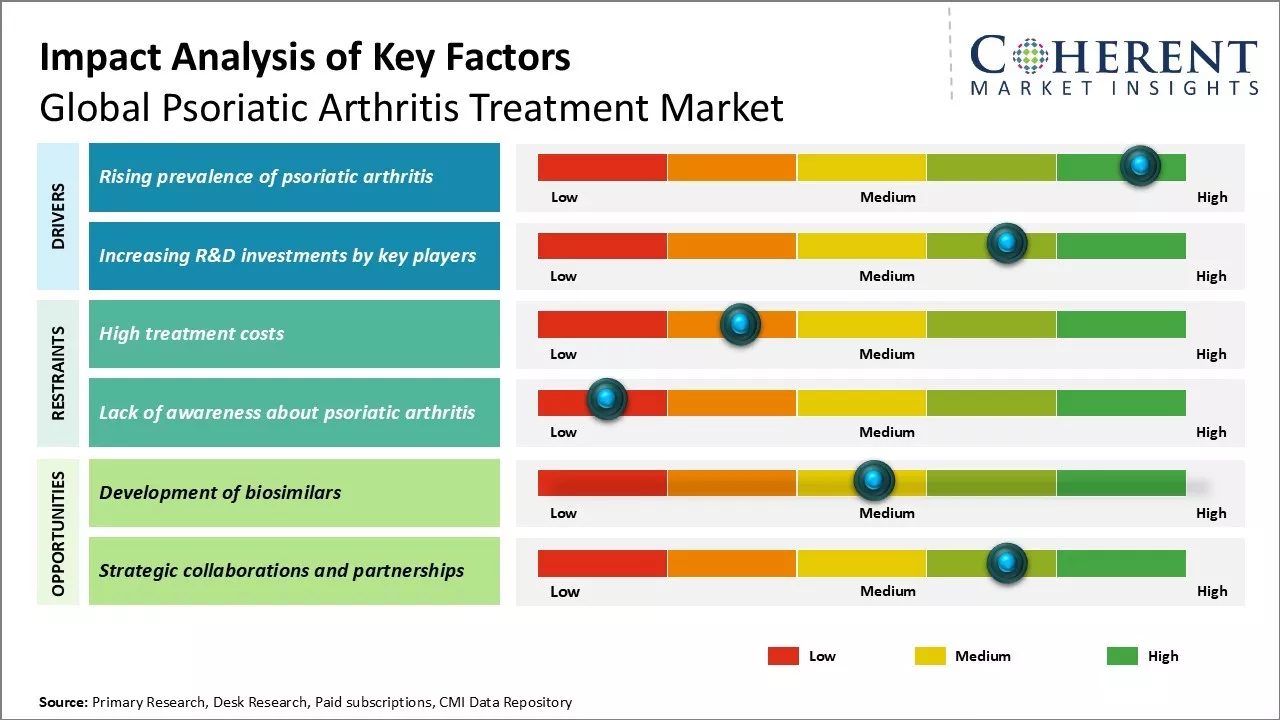Global psoriatic arthritis treatment market is estimated to be valued at USD 12.19 Bn in 2025 and is expected to reach USD 23.47 Bn by 2032, exhibiting a compound annual growth rate (CAGR) of 9.8% from 2025 to 2032.

To learn more about this report, Request sample copy
Global psoriatic arthritis treatment market growth is driven by rising prevalence of psoriatic arthritis across the world. Technological advancements in diagnosis and treatment of psoriatic arthritis have led to development of newer drug classes such as interleukin inhibitors, which have improved clinical outcomes and quality of life of patients. Rising awareness regarding early diagnosis and treatment of psoriatic arthritis can drive the market growth during the forecast period. However, high costs associated with biologic drugs for psoriatic arthritis treatment and patent expiries of blockbuster drugs can hamper the market growth.
Market Driver - Rising prevalence of psoriatic arthritis
According to latest available estimates, nearly 30 million people worldwide suffer from psoriasis. Out of which, approximately 30% of patients suffer from psoriatic arthritis (PsA). PsA causes inflammation and stiffness in and around the joints, and can severely impact the quality of life. Factors like genetic predisposition, excessive weight, smoking, and certain gut diseases have been linked to higher risks of developing psoriasis and PsA. With rising global prevalence of psoriasis and increasing awareness, more and more people are being diagnosed with PsA each year.
Most physicians earlier assumed PsA to be a minor issue or a precursor to psoriasis but now clearly recognize it as a chronic inflammatory disease requiring long term treatment approach. Improved diagnostic methods allow early detection and monitoring of joint damage. Population based studies show that nearly 50% of patients experience PsA onset before psoriasis, indicating delayed diagnosis is often the case. Even in developed markets, many patients have undiagnosed PsA for years, which has caused permanent joint damage by the time it was detected. Growing health impacts of PsA in terms of physical disability, impaired body functions, and mental health issues compel patients to seek treatment options.
Joining thousands of companies around the world committed to making the Excellent Business Solutions.
View All Our Clients